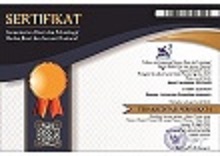KEBERLANJUTAN ARSITEKTUR TRADISIONAL ACEH PADA PERKEMBANGAN RUMAH TINGGAL: MASSA DAN ARTIKULASI RUMOH ACEH
Abstract
The new architecture requires the involvement of traditional architecture in keeping the continuity of the past. It is a must to keep the local identity. Thus, this paper discusses the continuity of Acehnese traditional house architecture, Rumoh Aceh, in the houses which developed in Lambheu Village. Many discussion had discussed its form continuity, but it was a rare discussion related to its other certain parts. Where every parts are what configurate the whole shape of architecture. Thus, this current study highlighted mass and articulation, as part of form configuration, to have deep analyzing on past and current condition of traditional characteristics. The aim of this study was to grow awareness of the continuity of past architecture by drawing an overview of its current condition. The parameters used to study mass and articulation are based on the theory of Baper and Hassan (2012). The research was carried out by observing the mass and articulation of the housing development and then qualitatively analyzed by comparing its conditions to the mass and articulation character of Rumoh Aceh. The results showed that mass and articulation continuity was poorly occurred.
Full Text:
PDFReferences
Achmad, Z. H., Sudikno, A., & Nugroho, A. M. (2017). Kosmologi Ruang Vertikal dan Horizontal pada Rumah Tradisional (Sa’o) Desa Adat Saga, Kabupaten Ende, Flores. ARTEKS, Jurnal Teknik Arsitektur, 1(2), 171. https://doi.org/10.30822/artk.v1i2.132
Baper, S. Y., & Hassan, A. S. (2012). Factors Affecting the Continuity of Architectural Identity. American Transactions on Engineering & Applied Sciences, 1(3), 10.
Booth, P. (2007). Spatial Planning Systems of Britain and France: A Comparative Analysis (1 ed.). Routledge. https://doi.org/10.4324/9780203962244
Chanrasari, A. I., Nurmiah, & Umar. (2018). Traditionalism in Dutch Colonial Architecture in Gorontalo. ARTEKS : Jurnal Teknik Arsitektur, 3(1), 13–26. https://doi.org/10.30822/arteks.v3i1.50
Ching, F. D. K. (2007). Architecture—Form, space, & order (3rd ed). Hoboken, N.J: John Wiley & Sons.
Denzin, N. K., & Lincoln, Y. S. (2018). The SAGE Handbook of Qualitative Research. 1694.
Durmus, S. (2012). Change and Transformation in Architecture: On the Concept of Zeitgeist. . . Pp, 14.
Dwijendra, N. K. A. (2010). Arsitektur tradisional Bali di ranah publik (Cet. 1). Denpasar, Bali: Bali Media Adhikarsa.
Ettehad, S., Azeri, A. R. K., & Kari, G. (2014). The Role of Culture in Promoting Architectural Identity. 10.
Fu, X., Harrer, A., & Steinhardt, N. S. (2017). Traditional Chinese architecture: Twelve essays. Princeton: Princeton University Press.
Hanan, H. (2018). Individual Practice and Cultural Context in the Transformation of Batak Toba House. Asian Journal of Environment-Behaviour Studies, 3(7), 99–108. https://doi.org/10.21834/aje-bs.v3i7.272
Harefa, A. S. (2019). Pelestarian desa Hilinawalo Mazino di Kepulauan Nias sebagai destinasi wisata. ARTEKS : Jurnal Teknik Arsitektur, 4(1), 57–62. https://doi.org/10.30822/arteks.v4i1.79
Hastijanti, R. (2005). Pengaruh Ritual Carok Terhadap Permukiman Tradisional Madura. 33(1), 8.
Hatta, A. J., & Sudrajat, I. (2020). The role of sanro bola in construction of Bugis traditional house in Soppeng District. ARTEKS : Jurnal Teknik Arsitektur, 5(1), 57–66. https://doi.org/10.30822/arteks.v5i1.119
Keumala, I. (2018). Peningkatan Aksentuasi Visual Koridor Publik Kawasan Bersejarah Pusat Kota Lama Banda Aceh. ARTEKS, Jurnal Teknik Arsitektur, 2(1), 33. https://doi.org/10.30822/artk.v2i1.138
Khaliesh, H. (2014). Arsitektur Tradisional Tionghoa: Tinjauan Terhadap Identitas, Karakter Budaya dan Eksistensinya. LANGKAU BETANG: JURNAL ARSITEKTUR, 1(1). https://doi.org/10.26418/lantang.v1i1.18811
Merriam, S. B., & Tisdell, E. J. (2016). Qualitative Research: A Guide to Design and Implementation. 371.
Nishi, K., Hozumi, K., & Horton, H. M. (1996). What is Japanese architecture? A survey of traditional Japanese architecture (1. paperback ed). Tokyo: Kodansha International.
Philokyprou, M. (2015). Continuities and Discontinuities in the Vernacular Architecture. ATHENS JOURNAL OF ARCHITECTURE, 1(2), 111. https://doi.org/10.30958/aja.1-2-2
Prakoso, B. P., & Wilianto, H. (2020). Penerapan konsep kejawen pada rumah tradisional Jawa. ARTEKS : Jurnal Teknik Arsitektur, 5(2). https://doi.org/10.30822/arteks.v5i2.219
Quirix, W. B., & Suleman, N. E. (2015). Transformation and Continuity of Architecture in Kaduna City, Nigeria, From 1900 – 2000. Journal of Engineering and Architecture, 3(1). https://doi.org/10.15640/jea.v3n1a14
Ragette, F. (2012). Traditional domestic architecture of the Arab Region (3., unrevised ed). Stuttgart: Menges.
Rapoport, A. (1969). House Form and Culture. 161.
Rizky, S. F., Loebis, M. N., & Pane, I. F. (2018). The continuity of Rumoh Aceh spaces on the development of houses in Gampong Lambheu, Aceh Besar. IOP Conference Series: Earth and Environmental Science, 126, 012002. https://doi.org/10.1088/1755-1315/126/1/012002
Sabila, F., & Handajani, R. P. (2014). Tipologi Tata Ruang dalam Rumoh Aceh di Kawasan Mukim Aceh Lhee Sagoe. arsitektur e-Journal, 7(1), 19.
Setyowati, D. L., & Sanjoto, T. B. (2016). Kearifan Lokal Rumah Tradisional Aceh Sebagai Warisan Budaya Untuk Mitigasi Bencana Gempa dan TsunamI. Journal of Educational Social Studies, 5(1), 8.
Torabi, Z., & Brahman, S. (2013). Effective Factors in Shaping the Identity of Architecture. Middle-East Journal of Scientific Research 1, 5(1), 106–113. https://doi.org/10.5829/idosi.mejsr.2013.15.1.2357
Tutuko, P. (2003). Studi Kasus Rumah Tinggal Di Pasuruan. Jurnal Arsitektur, 2(1), 14.
Wihardyanto, D., & Sudaryono, S. (2020). Arsitektur Kolonial Belanda di Indonesia dalam Konteks Sejarah Filsafat dan Filsafat Ilmu. Langkau Betang: Jurnal Arsitektur, 7(1), 42. https://doi.org/10.26418/lantang.v7i1.35500.
DOI: https://doi.org/10.17509/jaz.v5i1.41398
Refbacks
- There are currently no refbacks.
Copyright (c) 2022 Sarvina Fitri Rizky

This work is licensed under a Creative Commons Attribution-ShareAlike 4.0 International License.





